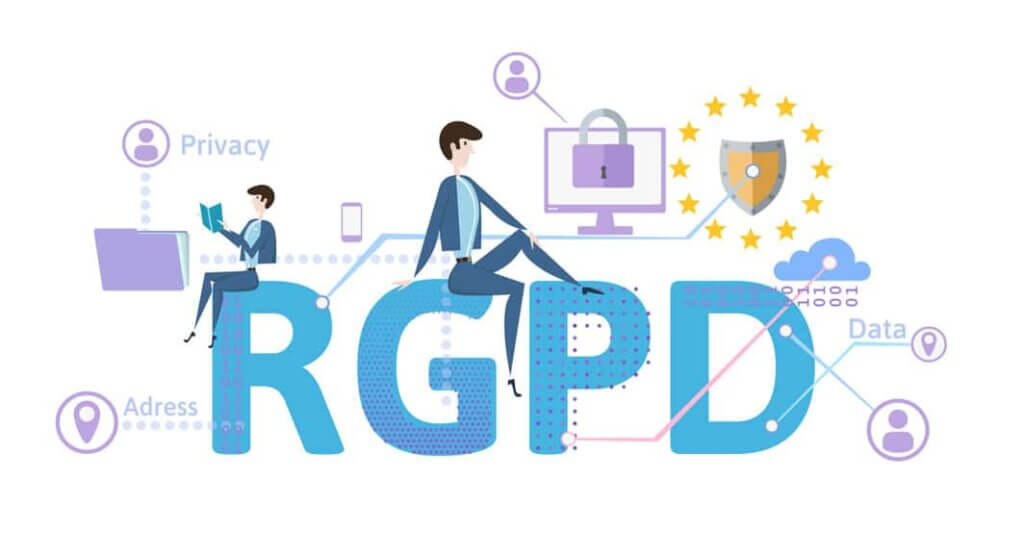GDPR Compliance in Healthcare: Essential Strategies and Steps for Healthcare Professionals
In the health sector, the protection of personal data is crucial. Patients' medical information is among the most sensitive, requiring increased vigilance to avoid confidentiality breaches. The General Data Protection Regulation (GDPR) establishes strict standards to ensure the security and confidentiality of this data in Europe. In accordance with this regulation, healthcare professionals must put in place robust measures to protect the personal data they process, not only to comply with the law, but also to maintain the trust of their patients.

The aim of this article is to provide a practical and detailed guide to health professionals in order to help them effectively comply with GDPRWe will cover the essential steps and best practices for ensuring health data security, from staff awareness to data breach management. By following these tips, health professionals will not only be able to comply with legal requirements, but also strengthen the protection of their patients' sensitive information, thus ensuring a safer and more reliable healthcare service.
Blog Plan
- Understanding GDPR in the Context of Healthcare
- Step 1: Awareness and Training of Health Personnel
- Step 2: Appoint a Data Protection Officer (DPO)
- Step 3: Map Health Data
- Step 4: Conduct a Data Protection Impact Analysis
- Step 5: Implement Appropriate Security Measures
- Step 6: Ensure Transparency and Patient Rights
- Step 7: Manage Data Breaches
Definition and objectives of the GDPR
THE General Data Protection Regulation (GDPR), which came into force on 25 May 2018, is a European legislation designed to harmonise data protection laws across Europe and strengthen individuals' rights to privacy and personal data protection. The fundamental principles of the GDPR include transparency, lawfulness, data minimization, accuracy, retention limitation, integrity, and confidentiality. In practice, this means that organizations must obtain clear and explicit consent for data collection, ensure that the data collected is relevant and limited to what is necessary, and protect this data from unauthorized access and security breaches.
Specificities of health data
THE health data are particularly sensitive because they contain highly detailed and intimate personal information about patients, such as medical history, diagnoses, treatments, and genetic information. Unauthorized disclosure of this data can have serious consequences for individuals, including social stigma, discrimination, and negative impacts on employment and personal relationships. Due to this increased sensitivity, the GDPR imposes additional requirements for the processing of health data. For example, health data may only be processed under strict conditions, such as obtaining explicit consent from the patient or the processing being necessary for medical or public health reasons.
Healthcare professionals must therefore be particularly vigilant in managing health data. This includes adopting robust technical and organizational security measures to protect data against any form of breach or unauthorized access. By complying with these obligations, health professionals can not only comply with the legal requirements of the GDPR, but also guarantee the confidentiality and security of their patients' information, thus strengthening the trust and quality of care provided.
Step 1: Awareness and Training of Health Personnel
Importance of awareness
There GDPR awareness is crucial for all healthcare staff, as every individual within the organization plays a key role in protecting patients' personal data. Understanding the principles and obligations of the GDPR helps prevent data breaches and ensures that data management practices comply with legal standards. Proper awareness reduces the risk of human error, which is often the root cause of security breaches. Furthermore, when staff are well informed, they are better able to respond effectively in the event of an incident, minimizing the potential consequences. In short, an educated and trained team helps create a culture of confidentiality and respect for personal data, which is essential for maintaining patient trust.
Training programs
To ensure a thorough understanding of the GDPR, it is imperative to put in place training programs adapted to the health field. Here are some examples of training and awareness:
- Initial training sessions : Organize training sessions upon hiring to inform new staff about the fundamental principles of the GDPR, the specificities of health data and internal procedures regarding data protection.
- Continuing education : Set up GDPR training regular meetings to remind staff of good practices and inform them of updates or legislative changes. This may include practical workshops, seminars and online courses.
- Case studies and simulations : Use real-life case studies and simulations to illustrate the consequences of data breaches and strengthen staff's practical skills in managing health data.
- Online Resources and Manuals : Provide accessible resources such as guides, FAQs, and explanatory videos on GDPR and health data management.
- Audits and feedback : Carry out internal audits regular to assess compliance and provide constructive feedback to staff, identifying areas requiring improvement or additional training.
By implementing these training programs, healthcare organizations can ensure that their staff are well prepared to manage data securely and GDPR compliant, while protecting the rights and privacy of patients.
Step 2: Appoint a Data Protection Officer (DPO)
Role of the DPO
In the health sector, THE Data Protection Officer (DPO) plays a crucial role in implementing and maintaining the GDPR compliance. THE DPO is responsible for overseeing data protection strategies and ensuring their compliance with legal requirements. Specific responsibilities include:
- Compliance Monitoring : Ensure that the organization complies with GDPR principles and local data protection regulations.
- Consulting and training : Provide advice to employees on their data protection obligations and organize awareness and training programs.
- Risk assessment : Conduct Data Protection Impact Assessments (DPIAs) to identify and mitigate risks associated with the processing of health data.
- Violation Management : Manage and notify personal data breaches to the competent authorities and the individuals concerned within the required timeframes.
- Point of contact : Serve as a point of contact for data protection authorities and patients on matters relating to the processing of personal data.
Appointment procedure
Choose and name one DPO Competent management is an essential step in ensuring effective health data management. Here are the steps to follow:
- Define the profile : Identify the skills and qualifications required for the DPO. This includes in-depth knowledge of GDPR, data protection expertise, and an understanding of the specificities of the healthcare sector.
- Internal or external recruitment : Decide whether the DPO will be recruited internally, from existing staff, or whether they will be an external consultant. An internal DPO can offer greater knowledge of the organization, while an external consultant can bring specialized expertise.
- Evaluation of applications : Evaluate potential candidates based on their experience, data protection skills, and ability to understand and manage health data risks.
- Official appointment : Officially appoint the DPO and inform all stakeholders of their appointment. It is important to ensure that the DPO has the necessary independence to carry out their duties without conflict of interest.
- Continuing education : Provide ongoing training to the DPO to keep them informed of legislative developments and best practices in data protection.
By appointing a competent DPO, healthcare organizations can strengthen their ability to protect sensitive patient data and comply with the strict requirements of the GDPR.
Step 3: Map Health Data
Identification of the data processed
The first crucial step in mapping the health data involves identifying the types of personal and medical data collected and processed by the institution. This data may include:
- Identification data : Name, address, telephone number, email address, etc.
- Medical data : Medical records, diagnoses, test results, prescriptions, medical history, consultation notes, etc.
- Sensitive data : Genetic information, biometric data, mental health details, treatment history, etc.
- Administrative data : Information on insurance, payments, appointments, etc.
Understanding what data is collected, why it is collected, and how it is used is essential to ensure compliant and secure management.
Data flow mapping
Data flow mapping involves visualizing how personal and health data flows within an organization. Here are the steps for effective mapping:
- Data collection : Identify data collection points, e.g., patient intake forms, electronic medical record management systems, telemedicine applications, etc.
- Data storage : Determine where and how data is stored. This includes internal databases, cloud servers, physical storage devices, and any other storage media used.
- Use of data : Map how data is used within the organization. For example, data may be used for diagnosis, treatment, medical research, billing, etc.
- Data sharing : Identify the entities with which the data is shared, such as other healthcare professionals, laboratories, insurance companies, public health authorities, etc. It is important to specify the terms and reasons for sharing this data.
- Securing data flows : Analyze the security measures in place to protect data at every stage of its flow. This includes data encryption, access controls, regular backups, and security audits.
By comprehensively mapping healthcare data, organizations can identify potential risks and implement appropriate safeguards. This systematic approach not only helps comply with GDPR requirements but also improves overall data management, ensuring better protection of sensitive patient information.
Step 4: Conduct a Data Protection Impact Assessment (DPIA)
When to perform a DPIA
A Data Protection Impact Analysis (DPIA) is necessary when the processing of data is likely to create a high risk for the rights and freedoms of individuals. In the health sector, a DPIA must be carried out in the following situations:
- Introduction of new systems : When implementing new electronic medical records management software or telemedicine applications.
- Changes in treatment : If significant changes are made to the methods of collecting, storing, or sharing health data.
- Large-scale processing : When health data is processed on a large scale, such as in epidemiological studies or patient registries.
- Use of new technologies : Adoption of innovative technologies such as artificial intelligence for diagnosis or patient management.
- Sharing sensitive data : Collaboration with third parties, such as laboratories or insurers, which involves the sharing of sensitive data.
Implementation steps
To conduct an effective DPIA, follow these steps:
- Define the context and objectives : Determine the data processing to be assessed, the reasons for this processing, and the objectives of the DPIA. Identify the stakeholders and those responsible for the process.
- Describe the data processing : Document the type of data collected, methods of collection, storage, use, and sharing. Include data flows and systems involved.
- Assess necessity and proportionality : Analyze why data processing is necessary and verify that only strictly necessary data is collected and processed.
- Identify risks : Assess potential risks to individual privacy and rights. Consider risks related to data confidentiality, integrity, and availability.
- Propose mitigation measures : Develop solutions to minimize or eliminate identified risks. This may include technical measures such as encryption, enhanced security policies, and additional training for staff.
- Consult stakeholders : Involve patients, healthcare professionals, and possibly data protection authorities to obtain feedback and validate mitigation measures.
- Document and approve : Write a detailed DPIA report, including findings and actions taken to mitigate risks. Obtain approval from organizational leaders.
- Implement and monitor : Implement mitigation measures and regularly monitor their effectiveness. Update the DPIA based on changes in processing or new threats identified.
By following these steps, healthcare organizations can not only comply with GDPR requirements, but also strengthen the security and confidentiality of health data, ensuring better protection of patient rights.
Step 5: Implement Appropriate Security Measures
Data security
There securing health data is a top priority for healthcare professionals to ensure the confidentiality, integrity, and availability of patient medical information. Security measures must be tailored to the specific risks faced by health data. Here are some examples of essential technical and organizational measures to protect this data:
- Data encryption : Use of encryption techniques to make data unreadable without an authorized access key, whether at rest (stored) or in transit (transmitted).
- Anonymization and pseudonymization : Removal or modification of personal identifiers to prevent direct identification of individuals from the data.
- Access controls : Implementing access restrictions to ensure that only authorized persons can view or manipulate data.
- Audit of access and activities : Monitoring and recording of data access and activities carried out, enabling the detection of any inappropriate or suspicious use.
- Regular backups : Making backup copies of data to prevent loss or corruption of information in the event of an incident.
- Vulnerability and Patch Management : Identification and regular correction of potential security flaws in the systems and software used.
- Continuing staff training : Regular staff awareness and training on data security best practices and incident response procedures.
Examples of good practices
- Encryption of communications : Using secure protocols like HTTPS to encrypt communications between users and servers.
- Password Management : Enforcement of robust password management policies, including complexity and regular renewal requirements.
- Physical access control : Restrict physical access to premises where sensitive data is stored or processed, using access cards, biometric locks, etc.
- Two-factor authentication : Strengthen account security by requiring two-step verification for access, requiring both a password and a code sent to a mobile device or security token.
- Continuous awareness : Regularly raise staff awareness of security risks, with an emphasis on social engineering techniques and emerging threats.
By implementing these appropriate security measures, healthcare professionals can significantly reduce the risk of data breaches and increase patient confidence in the protection of their medical information.
Step 6: Ensure Transparency and Patient Rights
Patient information
Informing patients about the collection and use of their health data is a fundamental element of the GDPR complianceHealthcare professionals must ensure complete transparency regarding data processing practices and provide clear and understandable information to patients. Here are some key points for informing patients:
- Privacy Policy : Provide patients with a detailed privacy policy that explains how their data is collected, used, stored, and shared, as well as the measures taken to ensure its security.
- Informed consent : Obtain explicit consent from patients before collecting or processing their data. This can be done through explicit consent forms or electronic consent.
- Patient Rights : Inform patients of their data protection rights, including their right to access, rectify, delete and port their data.
Patient Rights
Patients have specific rights under the GDPR to ensure control and protection of their health data. The main patient rights are:
- Right of access : Patients have the right to request and receive a copy of their personal data held by a healthcare professional, as well as information on how this data is processed.
- Right of rectification : If a patient's personal data is inaccurate or incomplete, the patient has the right to request its rectification or updating.
- Right to erasure : Patients have the right to request the deletion of their personal data in certain circumstances, for example when the data is no longer necessary for the purposes for which it was collected.
- Right to portability : Patients have the right to receive their personal data in a structured, commonly used and machine-readable format and to transmit it to another data controller.
Healthcare professionals must be prepared to respond to patient requests regarding the exercise of their data protection rights. This includes having clear procedures in place to handle these requests efficiently and within legally prescribed timeframes. By ensuring transparency and respect for patient rights, healthcare professionals can strengthen patient trust and satisfaction while complying with GDPR data protection requirements.
Step 7: Manage Data Breaches
Procedure in case of violation
In case of data breach, a quick and effective response is essential to limit potential damage and comply with GDPR requirements. Here are the steps to follow in the event of a data breach:
- Identification of the violation : Detect and confirm the data breach as soon as possible. This can be done through anomaly monitoring systems, internal incident reports, or third-party reports.
- Initial risk assessment : Immediately assess the nature and extent of the breach to determine its potential impact on the rights and freedoms of the individuals concerned.
- Isolation and mitigation : Take immediate action to limit the damage by stopping the spread of the breach and patching the vulnerabilities that caused it.
- Stakeholder Notification : Inform relevant stakeholders, including data protection authorities and individuals whose data has been compromised, in accordance with GDPR notification obligations.
- Detailed investigation : Conduct a thorough investigation into the circumstances of the breach to understand its causes, extent and potential impacts, in order to prevent future recurrence.
- Documentation and reporting : Document all aspects of the violation, including the steps taken to remediate it, and prepare a detailed report for submission to regulatory authorities.
- Remediation and prevention : Implement corrective measures to prevent future breaches, such as improvements to data security practices and additional training for staff.
Notification to authorities and patients
The GDPR imposes specific notification obligations in the event of a personal data breach. Healthcare professionals must notify the relevant data protection authorities as soon as possible, and in some cases, within 72 hours of discovering the breach. The notification to the authorities must include detailed information about the breach, its anticipated consequences, and the measures taken to address it.
Furthermore, if the breach is likely to result in a high risk to the rights and freedoms of data subjects, healthcare professionals must also individually notify patients affected by the breach. This notification must be made without undue delay and include clear information on the nature of the breach, the measures taken to address it, and the steps individuals can take to protect their data.
By following these data breach management procedures and providing appropriate notifications to authorities and affected individuals, healthcare professionals can demonstrate their commitment to data protection and compliance with the strict requirements of the GDPR.
Conclusion
There compliance with the General Data Protection Regulation (GDPR) in the healthcare sector is an absolute imperative to ensure the protection of patients' personal data and maintain trust in the healthcare system. Throughout this article, we have explored the essential steps to comply with GDPR in the medical context. Here is a summary of the key points:
We first emphasized the importance of awareness and training of healthcare personnel, emphasizing that each member of the team must understand the principles and obligations of the GDPR. Then we discussed the importance of naming a Data Protection Officer (DPO) and the need to map health data to understand its flow within the organization.
We also highlighted the crucial importance of carrying out a Data Protection Impact Analysis (DPIA) to assess potential risks to individual privacy. We then emphasized the importance of implementing appropriate security measures to protect health data from breaches and unauthorized access.
In addition, we addressed the need to ensure transparency and patient rights by providing clear information on data collection and use, as well as ensuring that patients' rights under the GDPR.
Finally, we examined data breach management and notification obligations to authorities and affected individuals in the event of a breach.
In conclusion, the health data protection and the GDPR compliance are not only legal obligations, but also essential elements to ensure confidentiality, security and respect for patient rights. We strongly encourage healthcare professionals to implement these steps to ensure effective protection of health data and maintain patient trust in the healthcare system.







